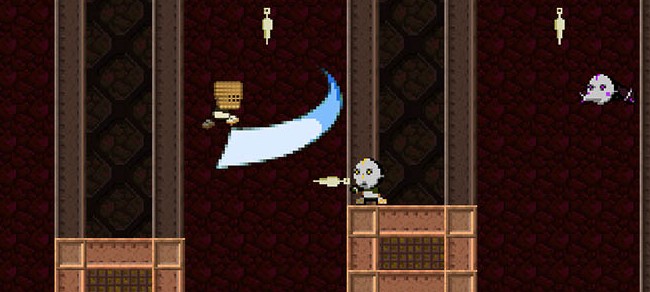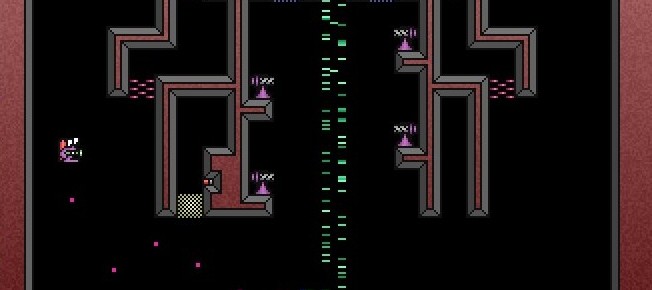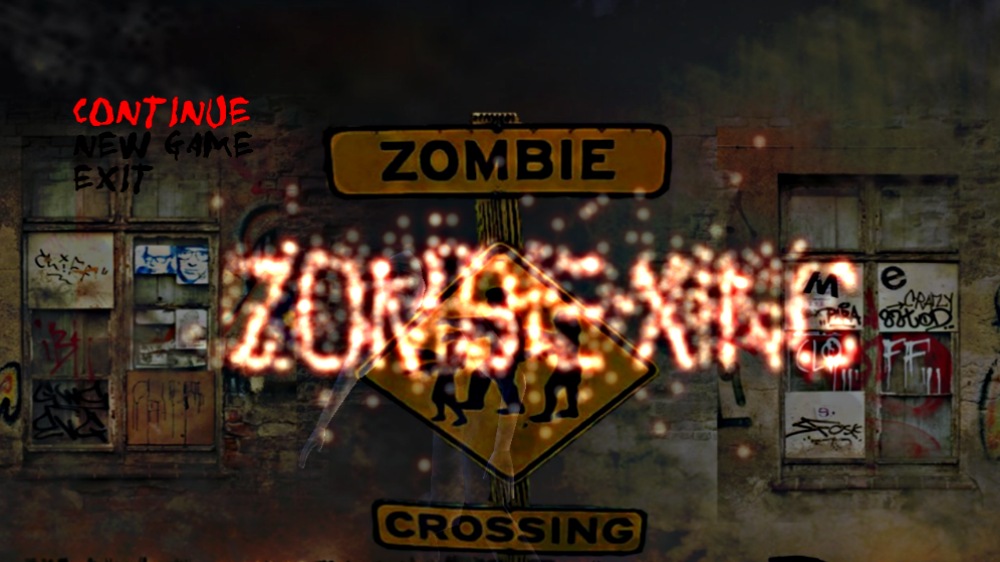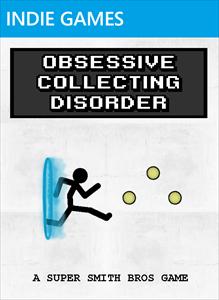 There’s something I’ve never managed to figure out about Obsessive Collecting Disorder’s premise. The introduction talks about a strange phenomenon of people flinging themselves into mortal danger just to collect every last item, but the game then goes on to make this happen by trapping you in a room until you’ve grabbed all the coins. The act of collection isn’t really obsessive or a disorder if it’s happening under threat of permanent imprisonment and a slow, lingering death. Enforced Collection Torture would perhaps be more accurate, but would only sell to a very specialised audience.
There’s something I’ve never managed to figure out about Obsessive Collecting Disorder’s premise. The introduction talks about a strange phenomenon of people flinging themselves into mortal danger just to collect every last item, but the game then goes on to make this happen by trapping you in a room until you’ve grabbed all the coins. The act of collection isn’t really obsessive or a disorder if it’s happening under threat of permanent imprisonment and a slow, lingering death. Enforced Collection Torture would perhaps be more accurate, but would only sell to a very specialised audience.
Obsessive Collecting Disorder is a punishment platformer. The elite few who have deduced my taste in games will be aware that I don’t like punishment platformers. I wanted to kick Super Meat Boy in the face, and SMB was far superior to the majority of sadistic perfectionist ordeals. Exceptions to the face-kicking sentiment are rare. N+ on XBLA is one of the few I actually have fun with, mainly thanks to its emphasis on working out how to cleverly snag as many coins as possible rather than just trying to drag your mortally perforated carcass across a psychotically painful room. Obsessive Collecting Disorder has the good grace to align itself with the N+ way of doing things and thereby spare me the necessity of gnawing off my own head in frustration, though it still costs me a finger from time to time.
When I can get the taste of my own devoured extremities out of my mouth, I quite enjoy Disorder (though the inability to abbreviate it to OCD without confusing it with another game is a thorn in my side). The visuals teeter on that uneasy watershed boundary between charmingly minimalist and offputtingly spare, but for the most part they work for me. Again, they remind me of the white/black/yellow simplicity of N+. In a game where the slightest error can result in an unpleasantly soggy-sounding death, it’s important to have visual clarity and avoid cluttering the levels with misleading background objects or befuddling textures.
Your little obsessive collector is ridiculously agile, which is frankly a necessity to feel comfortable tackling any punisher, but is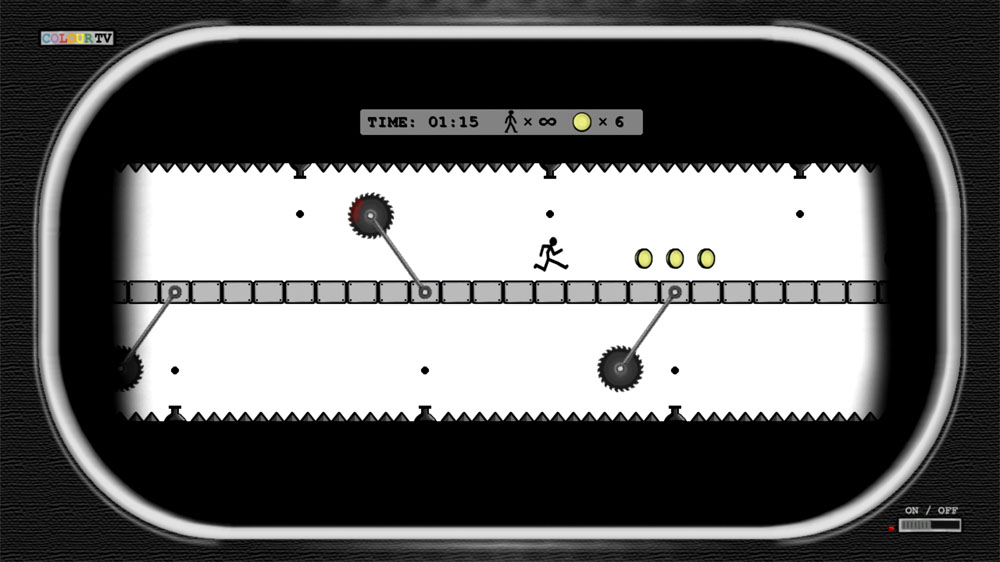 surprisingly often excluded from games that would benefit from it. Gruelling platform slog Aban Hawkins & the 1000 SPIKES insists on having a main character who can barely muster the agility to jump over a sausage roll.
surprisingly often excluded from games that would benefit from it. Gruelling platform slog Aban Hawkins & the 1000 SPIKES insists on having a main character who can barely muster the agility to jump over a sausage roll.
It never feels quite right in Disorder, though. Huge jumps in platformers frequently feel floaty, but there’s no float here. The obsessive collector leaps a mile into the air with the grace of a lunar gymnast, then drops like a sack of depressed potatoes. The upshot is that for a while it’s difficult to time your manoeuvres because the pace and motion of the jumping feels so unintuitive. In the early levels I suffered abrupt deaths less often from poor play than I did from uncomfortable control. Even so, I mostly felt the obstacles in Obsessive Collecting Disorder, while challenging, were seldom unfair. They were always surmountable as long as I could work out the sequence or the timing, and then execute it without making a mess of the whole thing.
I have to add one qualifier at this point: I wussed out. I played on the easiest difficulty setting, which adheres to the punisher convention of offering infinite lives. The standard difficulty setting is a different beast entirely. It gives only a limited supply of lives before you have to start over from scratch. In a game that sometimes saw me suffer a couple of dozen deaths even on its early levels, finite lives are only for the most insanely skilled – and I reiterate, this is the standard setting, the normal difficulty. Obsessive Collecting Order’s default state is an extreme sport and way too much for this mere human reviewer to fight through.
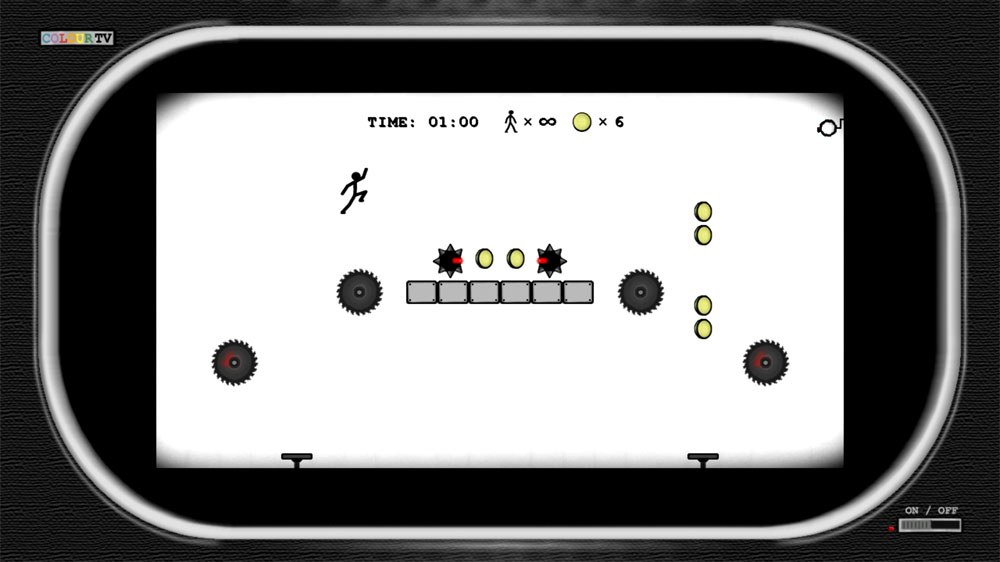 Ultimately, how much you enjoy Obsessive Collecting Disorder will come down to what you want from a game. If you’re one of those people who inexplicably relished the convoluted savagery of Super Meat Boy, large tracts of Disorder might be too simple for you. If you resolutely dislike punishers, this is unlikely to be a revelation that converts you. The game’s real strength, though, is that it’s two games in one. For the relative novice, it’s a challenging platformer that at least has the decency to run you gradually through manageable levels before the truly vicious parts kick in. At the same time, the punisher pro might find the standard, limited lives mode provides a new sort of intense challenge.
Ultimately, how much you enjoy Obsessive Collecting Disorder will come down to what you want from a game. If you’re one of those people who inexplicably relished the convoluted savagery of Super Meat Boy, large tracts of Disorder might be too simple for you. If you resolutely dislike punishers, this is unlikely to be a revelation that converts you. The game’s real strength, though, is that it’s two games in one. For the relative novice, it’s a challenging platformer that at least has the decency to run you gradually through manageable levels before the truly vicious parts kick in. At the same time, the punisher pro might find the standard, limited lives mode provides a new sort of intense challenge.
Obsessive Collecting Disorder isn’t for everyone, but it’s a generally well made dual punisher with slightly awkward movement controls that certainly mar the experience but never manage to ruin it. Moderate punisher fans might not get enough from either extreme, but as an entry point for newcomers or a new type of gauntlet for veterans, it has plenty to offer.
Overall Rating: 




A copy of Obsessive Collecting Disorder was provided for review by the developer.
© 2012 – 2013, The Indie Mine. All rights reserved.

